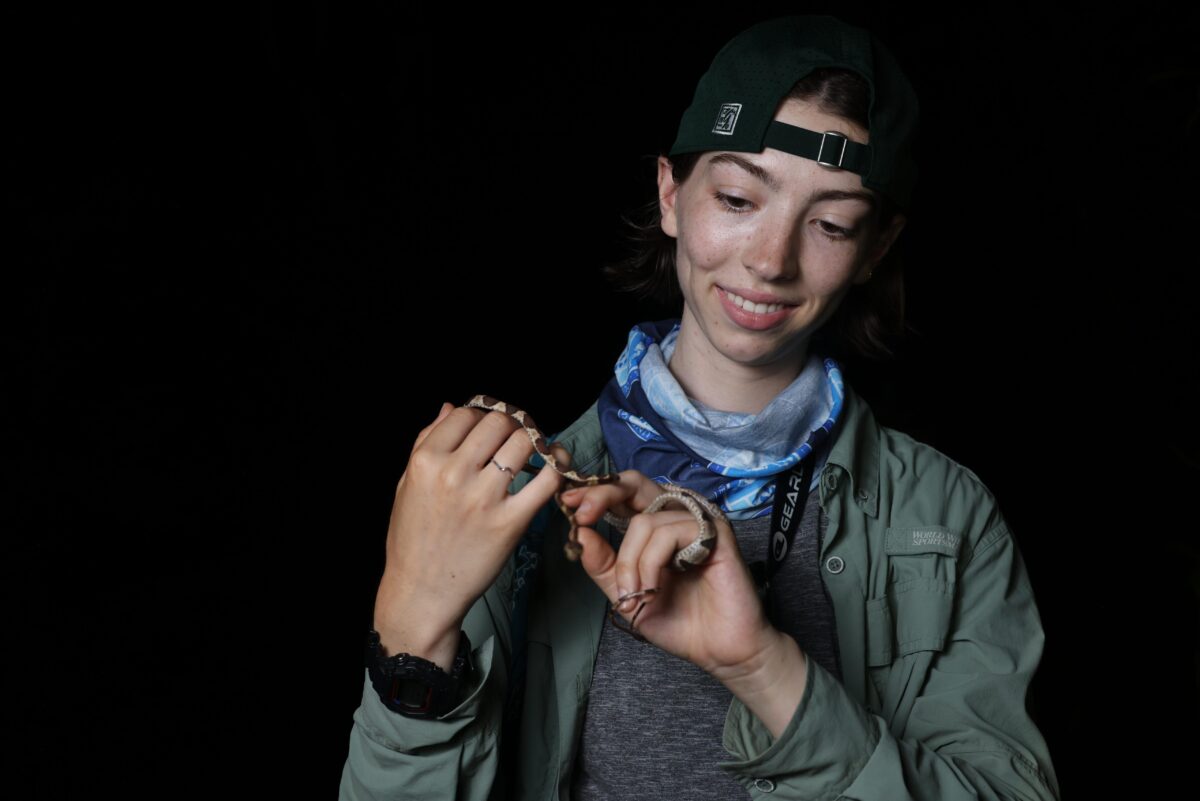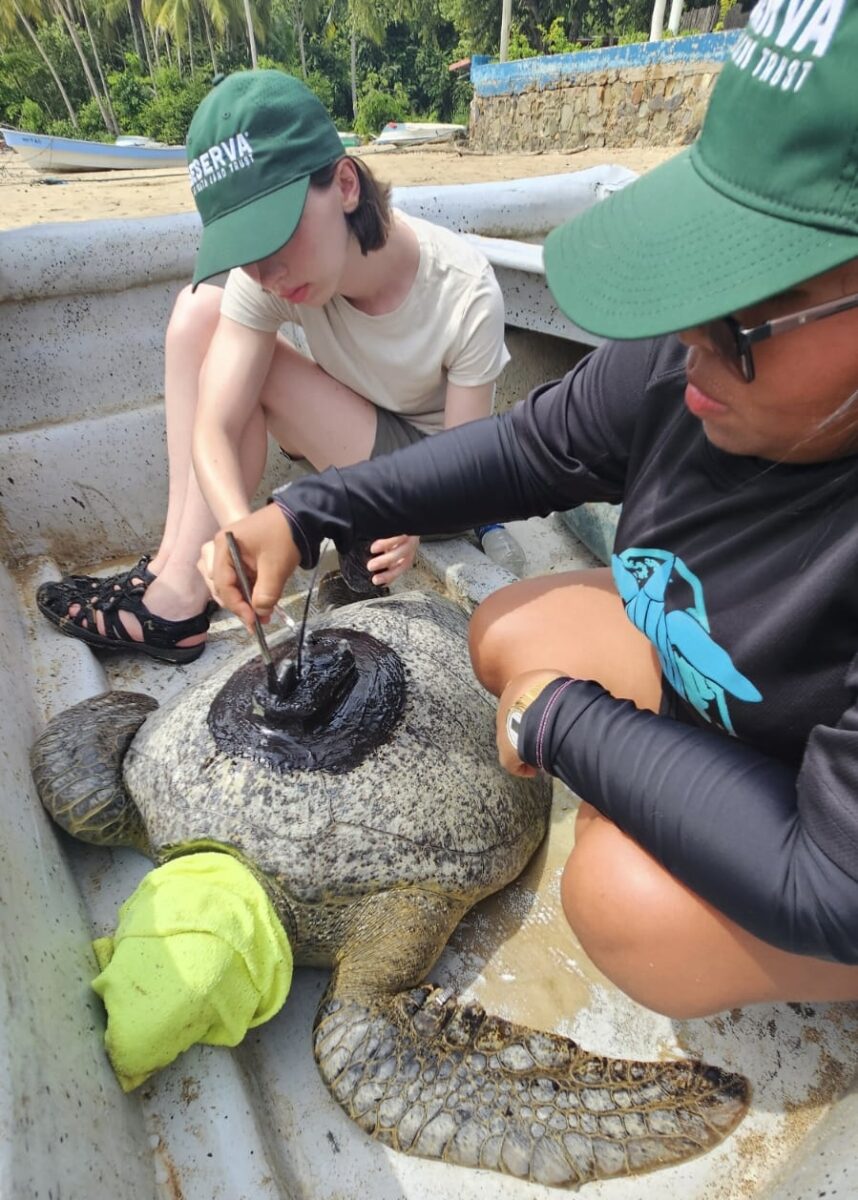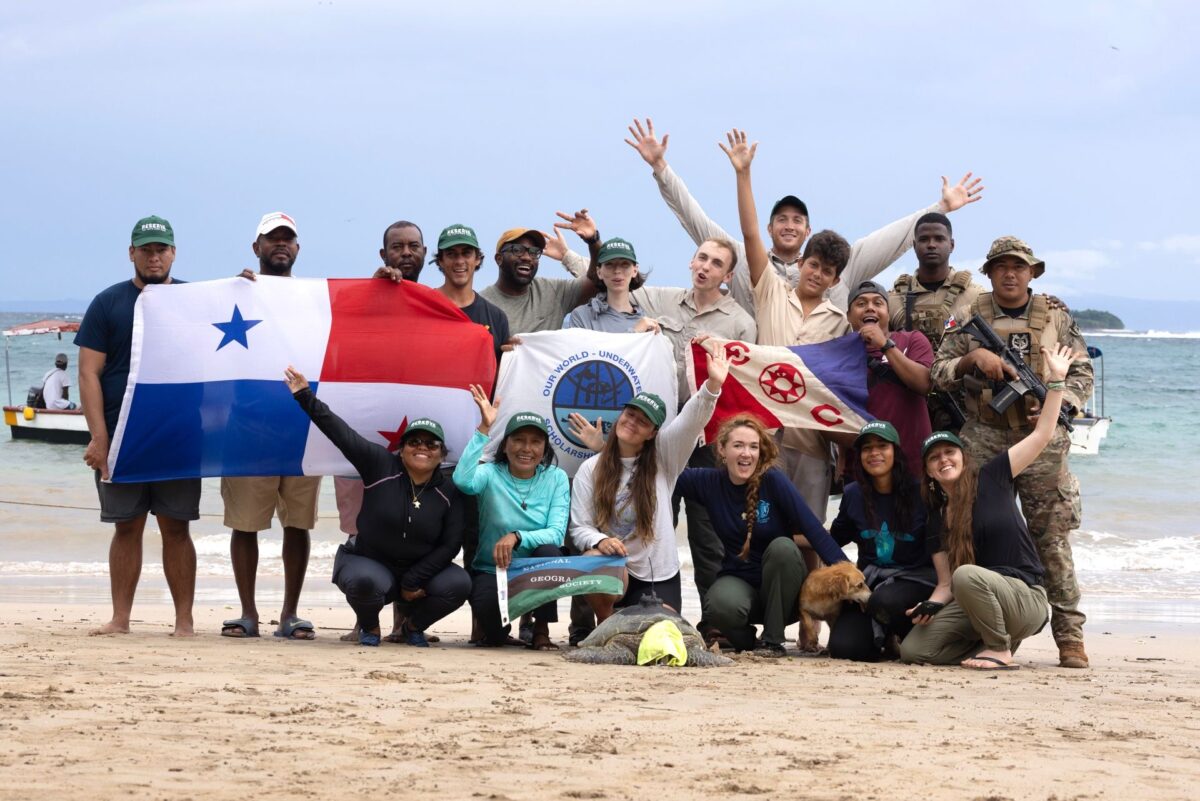The Pearl Islands of Panamá, an archipelago of over 240 islands and islets, host an incredible biodiversity of marine life. In August of 2024, nonprofits The Leatherback Project and Reserva Youth Land Trust embarked on an expedition to this unique region to deploy satellite tags on nesting and foraging endangered sea turtles. Reserva’s mission is to empower youth to conserve and protect threatened species and habitats. The Leatherback Project works to recover endangered species and build a sustainable future through research, community engagement, and policy. This expedition marked Reserva’s first marine-based collaboration.
I was fortunate to join the team for an exciting adventure! We started in the southernmost part of the archipelago, on Isla Del Rey, monitoring the beaches at night for nesting green sea turtles as part of the long-term sea turtle conservation research study led by The Leatherback Project. Through this expedition, supported by the funding efforts of Reserva’s youth international community, the team aimed to deploy 10 satellite tags on these endangered turtles to gain valuable knowledge about their nesting beaches and migratory routes to inform their protection. Sea turtle movement patterns in relation to the Pearl Islands are largely unknown, and this project aims to answer the question of whether they stay in the Gulf of Panama or migrate to other areas of the Pacific.
In 2021, during United Nations COP26, Panamá, Colombia, Costa Rica, and Ecuador created a large protected area called the Eastern Tropical Pacific Marine Corridor (CMAR) to support the protection of highly migratory species (whales, sea turtles, sharks, and rays) as they migrate between the existing protected areas in these countries.

While Marine Protected Areas (MPAs) establish localized protections, they often do not fully protect species with large migratory ranges. Less than 1% of MPAs globally cover enough area to protect the full range of these migration routes. CMAR recognizes the “corridor” in the Pacific that many species travel through and addresses the limits of small MPAs. Currently, the Pearl Islands are not a part of CMAR. However, if this project can prove connectivity between the Pearl Islands and areas within CMAR, it could help build the case to include the Pearl Islands under CMAR’s project protection measures.
We monitored the beach every night and did not see a single green sea turtle emerge to nest. This location is a common nesting site for greens, and based on local ecological knowledge, the nesting season typically begins in July. There may be delays this year due to oceanographic conditions and annual nesting population fluctuations.
Though we did not have any luck locating nesting green sea turtles, we saw lots of wildlife during our nightly jungle walks between our base camp and the beach we were monitoring. Every night was full of interesting finds, from snakes to whip scorpions.


We also got to see olive ridley sea turtles nesting and hatching! This was my first time seeing olive ridley turtles, and witnessing both nesting and hatchling events was really special.
The nesting event was also a stark reminder of the impacts of climate change. With sea levels on the rise and more frequent severe storms, beach erosion has become a significant threat to sea turtle nesting success. When they encounter beach berms, turtles often won’t nest or will nest below the high tide line. The nesting olive ridely turtle we saw encountered one of these berms, or walls where sand sand has been eroded, and returned towards the ocean several times, before finally finding a path around the wall.
Unfortunately, the nest’s location was not above the high tide line and was washed over, which harms developing embryos, especially during the early and late stages of development. Coastal erosion is just one of many threats faced by sea turtles, which is why it is vital to monitor and understand their migratory routes and population dynamics to implement targeted protections and conservation efforts.
We also received a surprise one day, when fisherman brought us a juvenile critically endangered hawksbill turtle! We put a metal tag on the turtle, and named her Tres de Mayo after the fisherman’s boat. With the threats of bycatch and turtle product consumption, collaboration with local people, particularly fishermen, is vital in conserving sea turtles.

Flexibility is key when doing fieldwork (which rarely goes according to plan), so we changed course and moved to Saboga Island to conduct night snorkel surveys to catch and study foraging sea turtles. This effort, led by The Leatherback Project, aims to deploy tags on green and hawksbill sea turtles as a part of a long-term monitoring project.
These surveys were unlike anything I had ever done before – each night, we went out with our flashlights, searching for turtles on the reef. We recorded every turtle seen during the survey and attempted to catch each one to check for existing tags or deploy new tags. Catching turtles is not an easy task- if they see you, there’s no chance you’ll catch up to them, and when you do catch one, they are really strong swimmers. I caught one female green—one of the coolest things I had ever done!
Each turtle that was not already tagged was given a metal tag and a Passive Integrated Transponder (PIT) tag, similar to a microchip used for pets. I learned how to place the metal tags and even how to inject the PIT tag! We also deployed four satellite tags, two on large female greens, one on a male green, and one on a male hawksbill. These four individuals were selected to help expand the dataset and because they are likely of breeding age (will they migrate?!).
Installing a satellite tag is quite a process! First, the turtle’s shell is sanded to ensure the tag will have a strong bond. Then, a layer of epoxy is applied, followed by fiberglass mesh, then more epoxy. An epoxy putty is used to fix the tag to the turtle’s shell. The final step is to apply anti-fouling paint to prevent algae and other organisms from growing on the tag and covering the sensors. When the turtle surfaces to breathe, the sensor detects the air and sends a signal to the satellites, allowing researchers to track the turtle’s movements over time. Throughout the entire tagging process, the turtle’s head is covered by a damp cloth, which puts them to sleep, helping minimize stress. Knowing that the tags we installed will collect valuable information about the movement of these endangered species gives me a lot of hope for their conservation.

Being a part of this project was incredible, full of new experiences and great people. Special thanks to Callie Veelenturf (Founder of The Leatherback Project ) and Callie Broaddus (Founder of Reserva Youth Land Trust) for being willing to have me join the team and showing me what it means to be a true leader and changemaker in the world of conservation. Thank you to the rest of the team for making this experience so special with all the great conversations, positivity, and laughter through it all!

Thank you to the partners and supporting institutions of this work, including the National Aeronaval Service of Panama (SENAN), Panamá Ministry of the Environment, ARAP Panamá, Rolex, National Geographic Society, Philip Stephenson Foundation, Mission Blue, The Explorers Club, Moore Charitable Foundation, Earth Law Center, Animal Welfare Institute, Splorers Club, and Fundación Tortugas del Mar.
Thank you to the Our World-Underwater Scholarship Society and our sponsor Rolex for making this scholarship experience possible. I would also like to thank Reef Photo and Video, Nauticam and Light and Motion for my underwater camera setup as well as Aqualung, Fourth Element, Suunto, Halcyon, and DUI for my diving equipment.